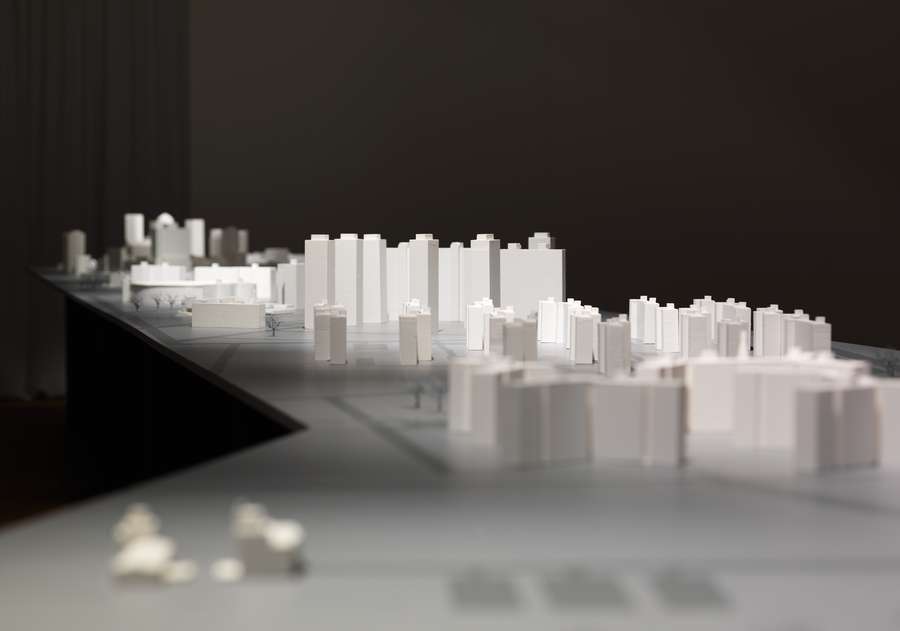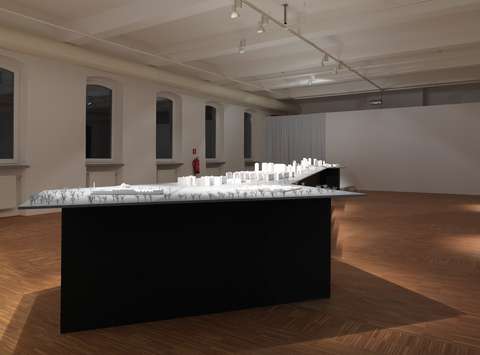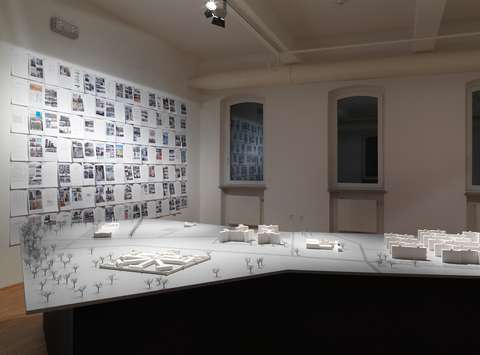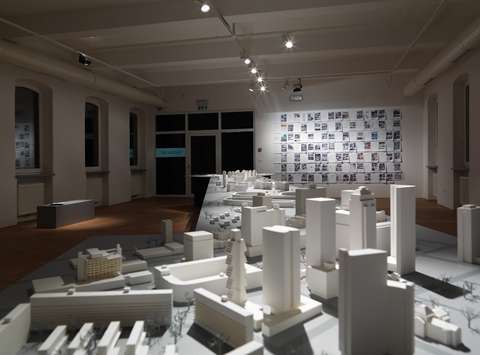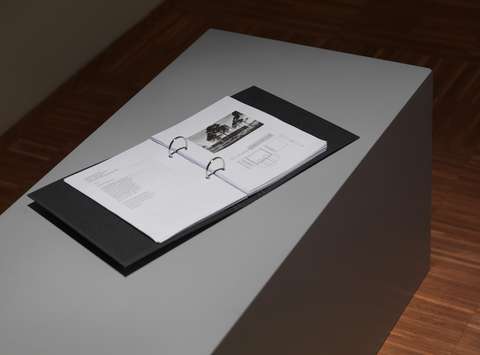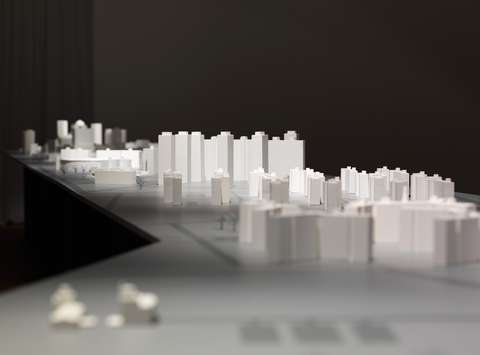Dušica Dražić
New City
The project that Dušica Dražić, an artist-in-residence at the Cultural Centre Tobačna 001 in 2011, is presenting is a utopian city of the future, a scale model comprising housing developments and office buildings, amusement centers, shopping malls, parks, hotels, schools, hospitals, court houses, railroad stations, a sports stadium, an airport – all the elements of a modern city.
What all these examples of architecture have in common is that they have all been pulled down, for a variety of reasons – for being dysfunctional, economically unviable, aesthetically unpleasing, technologically obsolete, or unprofitable. Collating data on buildings and structures from all over the world and using photographs as her points of departure, the artist has made scale models of a new city. The experience of a two-month stay in the former Ljubljana Tobacco Factory complex, which is to become the Tobačna City business, administrative, residential, cultural, and educational hub sometime in the future, prompted the artist to exhibit a project (produced by STUK, Loeven) that reflects or polemicizes with the fundamental premises underlying the concept of the Ljubljana new city. The renovated surviving factory buildings are earmarked primarily for cultural activities, while newly constructed buildings will cater to residential, business, and commercial requirements. Established in 1871, the former Tobacco Factory could be said to have been a town within a town: it had its own kindergarten, a library for the workers, a fire department, and a mixed choir. A small part of what remains of the factory complex today is used for urban administration offices, and an even smaller part serves as a cultural center; the rest is an abandoned lot, or rather, one of the main construction sites in Ljubljana. Here history is as good as forgotten, with only the Tobacco Museum on the upper floor of the CC Tobačna 001 and the renovated or dilapidated buildings of the old complex serving as reminders. It is such abandoned, forgotten, dysfunctional public or even private places that are at the focus of Dražić’s artistic interest, while the subjects that her works deal with are the instability, the impermanence, the quick mutability of human relations with architecture, the natural surroundings, and fellow humans. These relations are in a constant state of flux, negotiated and renegotiated, redefined, changed. The context of the exhibition venue plays a crucial role for the artist, framing and determining a specific environment and, consequently, the space of presentation. New City can be seen as an ironic commentary on the reckless haste of change and the ambition to create the ideal consumer – a potential resident of the new city within the city, or else a poetic translation of the demolished buildings into memorials to transience or epitaphs of progress.
Colophon
Production: Museum and Galleries of LjubljanaExhibition curator: Alenka Gregrič & Petja GrafenauerArtist: Dušica DražićText: Alenka GregoričDesign: Ajdin BašićInstallation photos: Matevž Paternoster / MGMLRealisation of the exhibition: Technical Service MGML The exhibition was made possible by:City of Ljubljana, Department for CultureThanks: Pieter-Paul Mortier, Wim Goossens, Sint Lucas, Lava Architecten CVBA, Eva Gheysen and STUK crew
Location
Tobačna ulica 1
1000 Ljubljana
Information and reservations:
T +386 1 24 12 500
T +386 1 24 12 506
E prijava@mgml.si
Opening hours
Exhibition space is open according to exhibitions:
Tuesday–Friday: 11:00–19:00
Monday, Saturday, Sunday: Closed
Tickets
Free entry.
